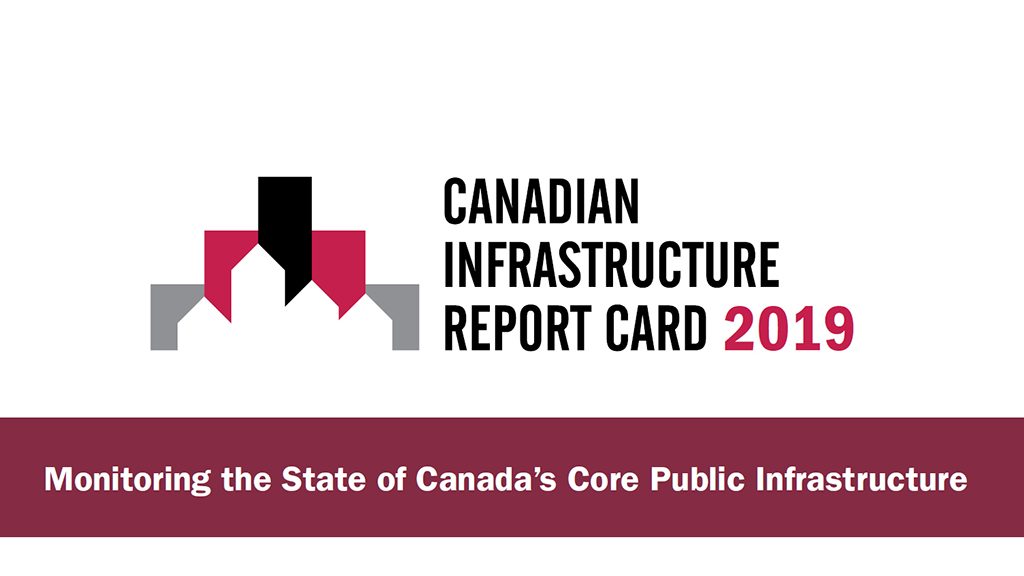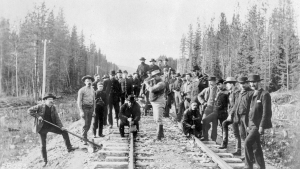A report-card-style report issued by eight national infrastructure stakeholder organizations calls for long-term and sustainable spending to replace Canada’s aging infrastructure.
The Canadian Infrastructure Report Card (CIRC), released Oct. 8, said a significant amount of public infrastructure in Canada is in poor condition.
The report found nearly 40 per cent of roads and bridges are in fair, poor or very poor condition, with roughly 80 per cent being more than 20 years old.
In some categories, such as community centres and libraries, more than 60 per cent of facilities are at least 20 years old. As well, 30 per cent of water infrastructure, such as watermains and sewers, is in fair, poor or very poor condition.
“Reliable infrastructure connects our communities, enables our economy and protects our environment – it supports our quality of life right across the country,” said John Gamble, president and CEO of the Association of Consulting Engineering Companies – Canada (ACEC), one of seven organizations supporting the report. “So, in light of these findings, Canadians should be concerned.”
It’s the third report card issued by founding CIRC partners the Canadian Construction Association (CCA), the Canadian Public Works Association, the Canadian Society for Civil Engineering and the Federation for Canadian Municipalities. Besides the ACEC, other participants in the report are the Canadian Urban Transit Association, the Canadian Network of Asset Managers and the Canadian Parks and Recreation Association.
For the first time, the CIRC made extensive use of data compiled for the Canadian Core Public Infrastructure Survey, a new federal program.
The 2019 results found that asset categories in worse condition than was reported in the 2016 report included roads, bridges and wastewater and linear stormwater assets.
“Data from the report revealed that Canada’s public infrastructure is at serious risk,” said Mary Van Buren, CCA president. “It will require rehabilitation and replacement in the next few decades to ensure services provided continue to meet the needs of communities.”
Roads and bridges are more vulnerable and will require significant investment over the next decade in order to keep them at a fair level if not a good or excellent level, Van Buren said.
“This is something post-election where we will be using this data to talk to the government about investing in Canada and the urgent need for investments particularly in our roads and bridges,” she said.
Gamble said infrastructure is a core business of government and it’s important to Canada’s economic, social and environmental quality of life.
“It’s what connects our cities, it’s what enables commerce and it contributes to how we protect and manage the environment and therefore it is worthy of a lot of attention from policy makers and decision makers,” he said “Public policy decisions need to be informed decisions and that is really the genesis of the report card, to facilitate informed decision-making when it comes to infrastructure investment.”
Gamble said previous analysis was based on long-standing climate patterns and failed to consider the effects of increasingly severe weather on aging infrastructure.
“Most engineers would argue most of those assumptions are no longer valid, as the 100-year flood is now the 50-year flood or the 20-year flood,” he said.
“The changing climate has two impacts on the existing infrastructure. One, the indirect impact is the wear and tear on existing infrastructure and therefore the physical impact on infrastructure, and secondly, in light of the changing climate, a lot of the infrastructure was built based on assumptions that were far too conservative — they were good-faith design assumptions made based on climate and predictable weather at the time, but with changing weather events, the capacity of existing assets may not be what we hoped it would be.”
Discussions on infrastructure funding should also consider funding burdens born by municipalities, Gamble suggested. Funding formulas for new infrastructure is generally 33-33-33 per cent among the three levels of government, but that fails to consider that 90 per cent of lifecycle costs to maintain the infrastructure is paid by the municipal level.
“I would argue that even with these generous contributions from the federal and provincial government, the municipal sector is still bearing about 93 per cent of the overall cost of design, build, maintain and managing infrastructure assets,” he said.
For more information on the report card visit www.canadianinfrastructure.ca.











Recent Comments
comments for this post are closed